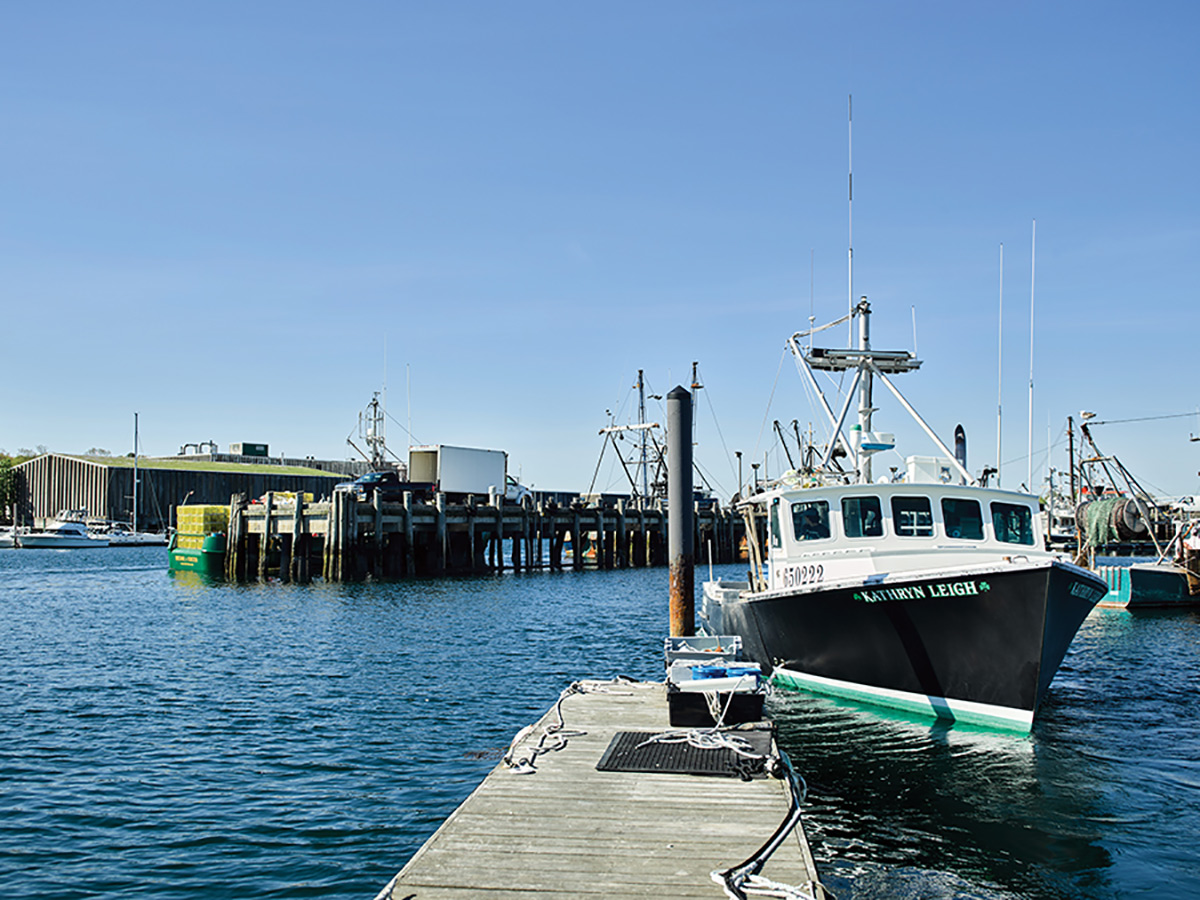For the past few years, second–generation Gloucester fisherman B.G. Brown has been selling much of his catch to a major food retailer, earning higher-than-average prices because of his commitment to sustainable fishing techniques. Then the coronavirus hit.
With shoppers staying home, Brown’s main customer had to lower the prices it paid and eventually cut back on how much fish it could take. Now he has to sell his catch at regular market prices, which have dropped so low that every fishing trip requires a careful calculation, Brown says.
“You have to weigh it out: Is it worth going out for these super-low prices, or do you just tie the boat up?” he muses. “It’s a hard call right now.”

Gloucester has been a fishing town since its founding in the early 1620s, and the industry was the backbone of the local economy well into the 20th century. In recent decades, however, the industry has struggled as it grapples with regulations designed to prevent over-fishing and limit environmental damages. Many fishermen with long family histories in the business have had to turn to new professions, and the city’s fishing fleet has declined significantly since its peak.
When the COVID-19 pandemic emerged, the situation became even worse. Government mandates and public health recommendations closed the doors of many restaurants, where the vast majority of the seafood consumed in the United States is eaten. In 2017, about 68 percent of the money Americans spent on seafood—some $70 billion—was at restaurants, according to a report from the National Oceanic and Atmospheric Administration.
But now, with diners staying home, demand has dropped and prices have plummeted as well.
“Overall, we’re seeing this shutdown of the seafood supply chain that’s having a devastating impact,” says Brett Tolley, national program coordinator for the Northwest Atlantic Marine Alliance.
The one bright spot in the market is the success of alternate business models that connect consumers directly with locally caught fish, keeping the product fresher and putting fewer middlemen between fishermen and seafood lovers.
Cape Ann Fresh Catch, based in Gloucester, is one of the country’s first community-supported fisheries, a model in which buyers sign up—and pay—for weekly deliveries of whatever fish is biting. The goal is to provide fishermen a measure of predictable, stable income while creating a market for whatever they catch. In recent weeks, demand is way, way up, says Donna Marshall, one of the founders of the organization and the outgoing executive director.
“Home deliveries have quadrupled,” she says. “My program is booming.”
In other cases, fishermen, fish dealers, and lobstermen have experimented with selling directly to consumers. Fisherman’s Wharf, a fish dealer in downtown Gloucester, has been selling haddock and scallops for curbside pickup. The operation began as a twice-weekly drive-through pop-up, but the lines of waiting buyers stretched around the block and the team realized they needed a new approach.
Brown has acquired a dealer’s license himself, with the goal of tapping into some of this surging demand, but is still figuring out how to get his catch processed and prepared for sale while adhering to all the relevant health regulations.
These pockets of activity, however, are not enough to sustain the area’s fishermen, Marshall says. She urges anyone interested in buying local fish to pay attention to the details and think about how much money is making it back to the fishermen themselves.
The situation, Tolley says, highlights the ways in which food distribution systems do not work to the advantage of small, local businesses like the fishermen of Gloucester. The goal of the current approach, bolstered by federal policy, is to move large amounts of food long distances, he notes. It is difficult in this environment, for independent producers to market themselves or participate as anything other than a very small-scale supplier.
As Congress considers additional stimulus spending, however, Tolley’s group and others are lobbying hard for future bills to include provisions that would support new models that could help fishermen make more of their catch.
And despite all these challenges, local advocates remain optimistic that the current community connection to fishermen will linger even after the pandemic fades away.
“We’re seeing for the first time in a long time this response from communities along the coast that are telling the fishermen, ‘We care about you,’” Tolley says. “This crisis is reminding people how essential our fishing community really is. I see fishermen finding hope in that.”

